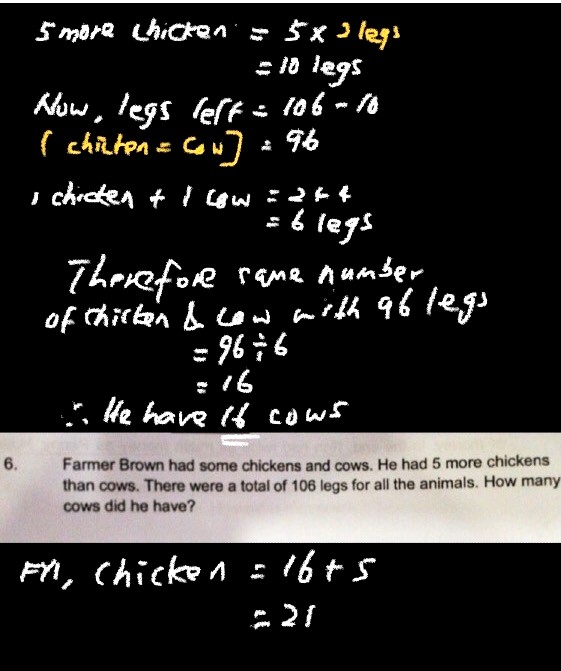Ask Singapore Homework?
Upload a photo of a Singapore homework and someone will email you the solution for free.

Question
Primary 4 | Maths
One Answer Below
Anyone can contribute an answer, even non-tutors.

Please help. Which method should use? Can use assumption?
There are 5 more chickens than cows. Chickens have two legs (for a regular chicken) and cows have four legs (for a regular cow).
Assume there are 5 chickens and no cows. There would be a total of 5 x 2 = 10 legs.
Now, the next pair would be 6 chickens and 1 cow. There would be a total of 6 x 2 + 1 x 4 = 16 legs, an increase of 6 legs from the previous situation (because of the extra chicken and cow).
The next pair would be 7 chickens and 2 cows. There would be a total of 7 x 2 + 2 x 4 = 22 legs, an increase of 6 legs from the previous situation (because of the extra chicken and cow).
We continue this process until we get around 17 chickens and 12 cows, for a total of 17 x 2 + 12 x 6 = 106 legs.
For every one chicken and one cow, we have 6 legs.
Since the story has it that the total number of legs is 106, having 5 chickens less would mean having 10 legs less, for a total of 96 legs.
Because 1 set (of one chicken and one cow) has 6 legs, there must have been 96 / 6 = 16 sets of animals, so there are 16 chickens and 16 cows in this situation.
In reality, there are 21 chickens and 16 cows for the 106 legs.
See 1 Answer





